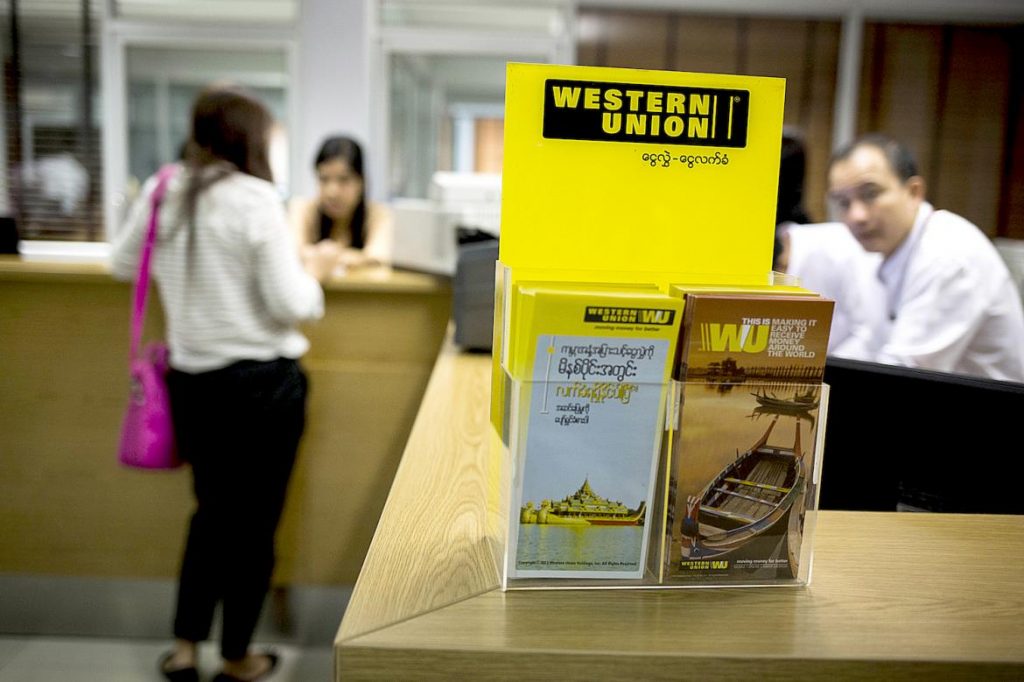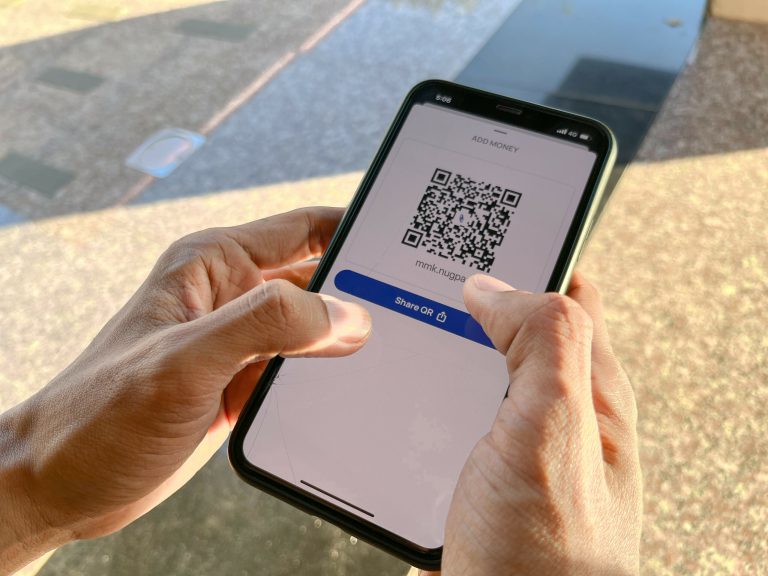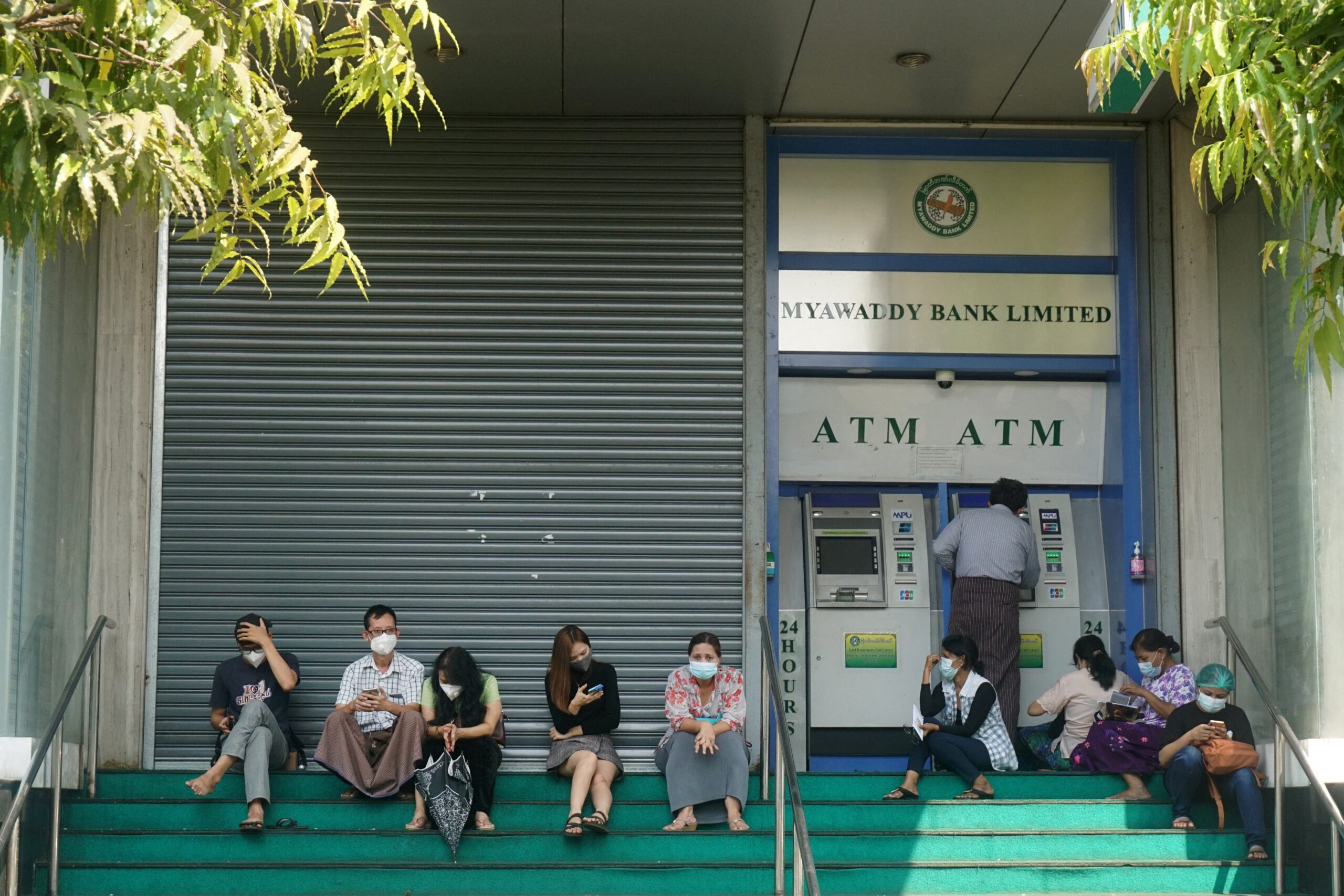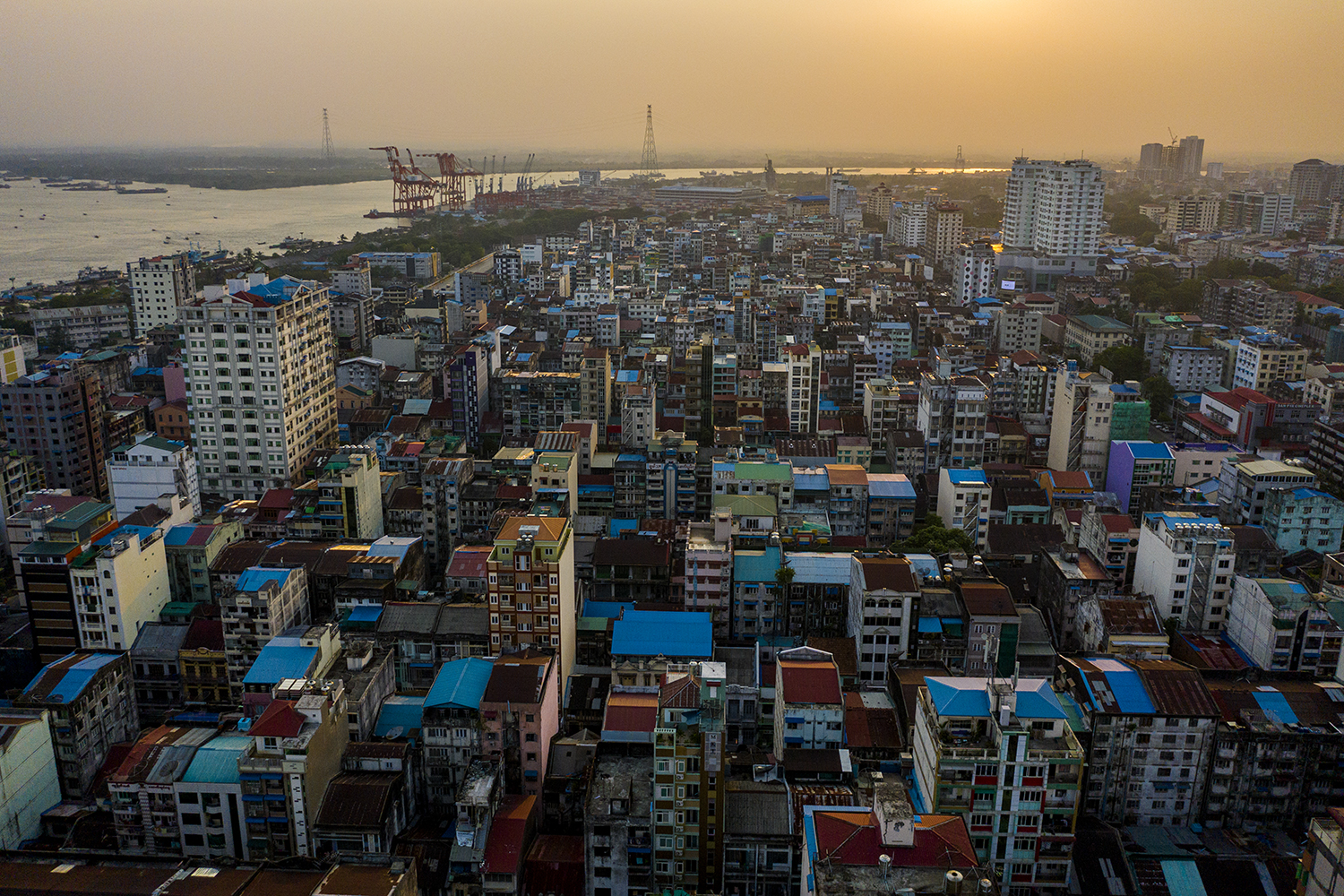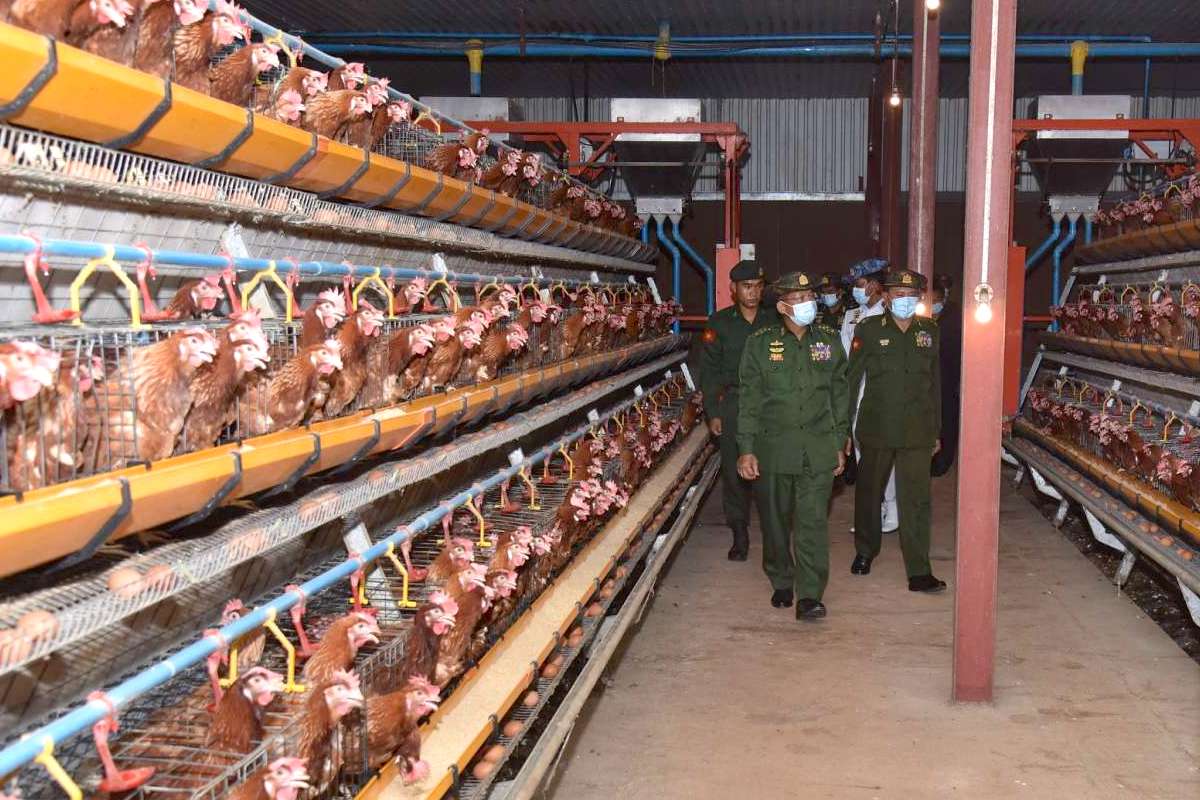Myanmar’s banks are increasingly offering services targeted at foreigners, but negotiating the complex range of regulations and fees can be hard work.
By THOMAS KEAN | FRONTIER
FIVE years ago, your typical expat was paid in cash, received from the office finance department in a brown paper bag at the end of the month. The money was then kept under a mattress, behind a cupboard, or buried in the back garden of a house in Golden Valley. International transfers took place through Yangon International Airport, and foreign currencies were changed furtively at Bogyoke Market or in hotel lobbies. Wallets were replaced annually due to the heavy wear and tear from carrying wads of K1,000 notes.
For many, little has changed. Cash remains king, but thanks to some relaxations of central bank rules, expats in the country are no longer required to live among the great unbanked – that is, the 45 million or so people in Myanmar who do not have an account.
Nearly all private banks now offer products that expats can use, even if they are not quite as flexible – or straight-forward – as what you might be used to back “home”. This is often because of central bank rules rather than a lack of desire on the behalf of the banks themselves, suggesting that things could change quickly if regulations are eased.
Who can open an individual account?
Almost anyone. There are some eligibility requirements but they are quite minimal. You need to have a valid passport and business visa (at least 70 days duration), together with a letter from your employer confirming that you work for them. For a foreign-currency account, some banks also require two passport photos.
Support more independent journalism like this. Sign up to be a Frontier member.
“If you have all the documents ready with you, the process can be done in 30 minutes to an hour,” says Ma Shwe Sin Hein, Yoma Bank’s senior associate for corporate banking and financial institutions. Both individual and joint accounts are available.
Which currency is best?
The main thing to decide when opening an account – besides which bank to use – is which currency to use. Myanmar kyat and US dollars are the most common types, but some banks also offer accounts in euros or Singapore dollars.
The advantage with kyat is accessibility: You can make withdrawals or deposits in person at any branch, as well as use ATMs (although not all banks have an ATM network). There are also no limits on the size of deposits or withdrawals. Unfortunately, ATM cards cannot yet be used overseas and international transfers are also off limits.
Foreign currency accounts have more limitations, and are better suited to storing cash and transferring money. They cannot be accessed with an ATM card – withdrawals have to be in person. Not all branches are licensed to handle foreign currencies, either.
CB Bank has between 40 and 50 foreign currency branches, but most banks have far less. Yoma, for example, has about 60 branches, but only one foreign currency branch. AYA Bank has almost 160 branches, but just four of these handle foreign currency accounts. Myanma Apex Bank, with 70 branches, has just five that handle foreign currency. Most are clustered in downtown Yangon.
Withdrawals from a US dollar account are typically made using a chequebook (remember those?). The one upshot is that you don’t have to make the withdrawal in person – you can write the cheque and get someone else to collect the money (they need to take photo ID).
There are also withdrawal limits on US dollar accounts, introduced by a panicked central bank last year when the value of the kyat began to plummet. The limit is $10,000 per week and $5,000 per day – so you could make two withdrawals a week of $5,000 each. There are no limits on deposits, but for larger deposits some banks have a policy of requiring you to show evidence of the source of funds – a payslip or letter from your employer stating your salary, for example – to assure them you’re not engaged in nefarious activities.
The big advantage of a US dollar account, of course, is that you’re less exposed to foreign currency risk. Consider this: if you’d changed $10,000 into kyat when the local currency was floated in April 2012 and put it into a bank account, it would now be worth the equivalent of less than $7,000 due to the depreciation of the kyat over the past four years.
Many expats choose to open both a kyat and US dollar account, keeping their savings in US dollars and depositing enough in the kyat current account to cover living expenses.
Are deposits guaranteed?
No.
But at least if I have a kyat account, I can enjoy those high interest rates, right?
Keep dreaming! Central bank rules prohibit banks from paying interest to foreigners, for both kyat and foreign-currency accounts. So forget about 8 percent annual interest on savings, or term deposits earning 10 percent a year.
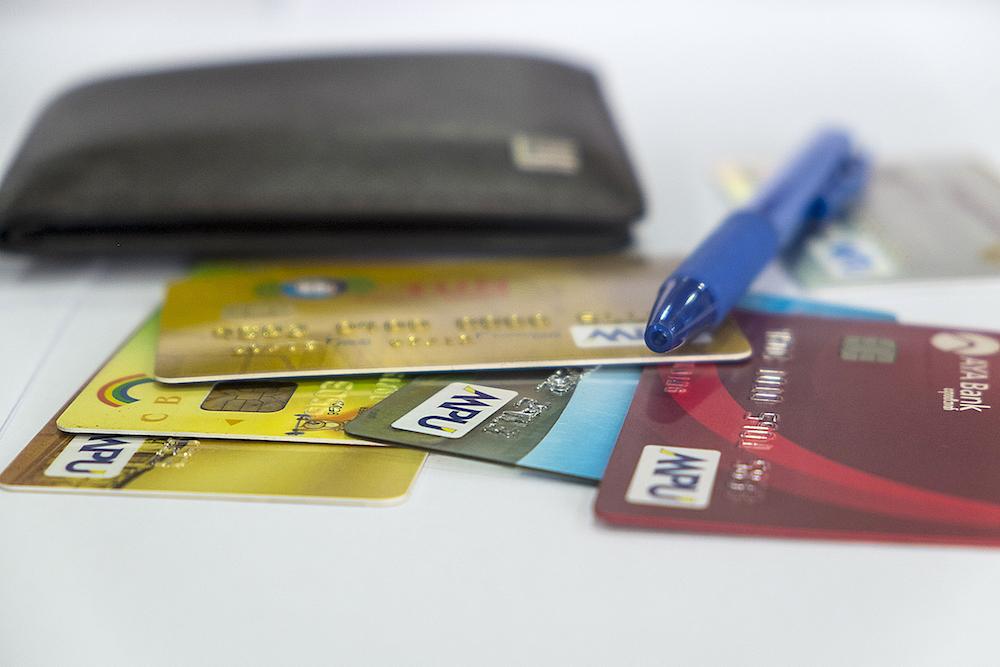
Foreign residents can open kyat currency accounts linked to a Myanmar Payment Union debit card. (Teza Hlaing / Frontier)
How disappointing. Give me the rest of the bad news – what are the fees on these accounts?
Actually, both kyat and foreign currency accounts have no setup or monthly fees at all because the central bank restricts what banks can charge for different services. Banks are also not able to charge for deposits to or withdrawals from kyat bank accounts, either in person or through an ATM (provided you use your bank’s ATM). Using another bank’s ATM incurs a small fee, normally around 0.1 percent (or K100 on a K100,000 withdrawal).
Foreign currency accounts are subject to a host of other charges, however. Even the basics attract fees: bizarrely, the banks are required to charge customers when they deposit cash into a foreign currency account. This typically ranges from 0.3 percent to 0.6 percent (US$3-6 for every $1000 deposited). There’s also normally a flat fee for withdrawals – US$1 or K1,000, depending on the bank.
So my employer could pay me directly into my foreign currency account?
Yes, but it might not be the best option. Here’s where the central bank’s ‘nanny culture’ begins to get a bit ridiculous. Transferring from a foreign currency account to another foreign currency account within the same bank is easy (and normally free). But sending US dollars between banks within Myanmar is slow and relatively expensive. This is because central bank rules dictate that state-run Myanmar Investment and Commercial Bank act as an intermediary.
As a result, if you – or your employer paying you – want to transfer money from, say, the CB Bank branch at Union Financial Center to the AYA Bank head office 750 metres down Mahabandoola Road, it’ll take three days and cost you $20 (more if the transfer is above $20,000) plus a K4,000 ‘cable fee’. Before you get too frustrated, remember that it’s still cheaper than depositing in person if the amount you want to transfer is above $5,000. Finally, some banks simply do not allow you to transfer to a foreign currency account at another bank.
That’s depressing. But I can receive cash from abroad, right? And does that mean I can also transfer it out of Myanmar using a foreign currency account?
The simple answer is yes. Sometimes. Because Myanmar banks still have a limited number of partners in foreign countries (known as “correspondent banks”) it can be circuitous, and as a result will cost you time and money. And here’s the kicker: the transaction might also be blocked because Western banks are worried about violating US sanctions, specifically doing business with those on Treasury’s Specially Designated Nationals list.
If you’re treading a fairly well worn route – transferring between Myanmar and Singapore, for example – and sending to a correspondent bank, expect a processing time of two business days, says Yoma’s Shwe Sin Hein. “But if you’re remitting money to the US or certain countries in Europe that are not familiar with us then it will take more time for them to do the screening [for sanctions]. In those cases it could take five to seven business days, or even up to two weeks,” she says.
Correspondent and other banks involved in the transfer will also have their own charges, in addition to the fees levied by your Myanmar-based bank. The latter vary to some degree, but are all pretty similar. Yoma charges 0.125 percent for outbound remittances, and a flat $12 for incoming. CB Bank, which has 33 correspondent banks, charges a flat $20 plus K2,000 cable fee for transactions below $20,000, and 0.125 percent plus K2,000 on transactions above that amount.
Some banks, including AYA, refuse to transfer to banks other than those in their correspondent network. Staff from other local banks told Frontier they would, if a customer requested, try to transfer to a bank in the United States, Europe or Australia, but considered it “risky” to do so. Instead, they recommend opening an account with a correspondent bank and sending the money in two separate transactions (for example, Myanmar to Singapore, and then Singapore to the United States).
Didn’t Western Union recently begin allowing outbound transfers?
As of June, Western Union received central bank permission to conduct transfers from Myanmar. Transactions must fit into one of several categories: family support; travel, education or health expenses; gifts or donations; and inheritance or real estate. Transfers are limited to $3,000 per day, and for gifts, donations, inheritance and real estate there is a cap of $10,000 a year.
Most banks offer this service, but each imposes their own conditions, says Mr Atish Shrestha, a regional director at Western Union for Indochina and Thailand. “The send limit may vary among agent banks as some may opt for a lower send limit during the initial launch period,” he says.
Myanma Apex Bank, for example, only allows you to send a maximum of $500. Yoma, on the other hand, will let you send the full $3,000. Most will also require some evidence that the transfer is for the purpose specified, but the type of documents required varies from bank to bank.
So if the fees are the same, what differentiates the banks?
For foreigners, the main thing to consider is the number and location of branches, and also the ATM network if you’re using a kyat-denominated account. Service standards are also a big factor.
What about internet banking?
This is fairly new in Myanmar, although the banks are making big strides. For now, online transfers are limited to onshore transactions – that is, transfers between Myanmar-based, kyat-denominated accounts – within the same bank.
Credit cards?
Some banks have recently started offering credit cards, despite Myanmar lacking a credit bureau that can provide information on an applicant’s creditworthiness. The credit limits are instead offered based on the income of the applicant. Most credit cards are available only to Myanmar nationals, but AYA states that they are available to permanent residents as well.
Okay, so what other options do I have?
There’s another relatively new product that could be useful in some circumstances. Most of the major banks now issue prepaid MasterCard and Visa cards that you pay a small fee (normally $10 at a time) to load up with US dollars, euros or Singapore dollars. The cards can then be used for online payments, or point of sale transactions and ATM withdrawals outside Myanmar. That makes them a relatively cheap way to buy air tickets, book hotels, pay bills and so on, although they are limited in that you can’t transfer money to another account and they can’t be used for purchases inside Myanmar, except online.
This article originally appeared in Frontier Myanmar’s Banking and Finance special edition, published in July 2016.


